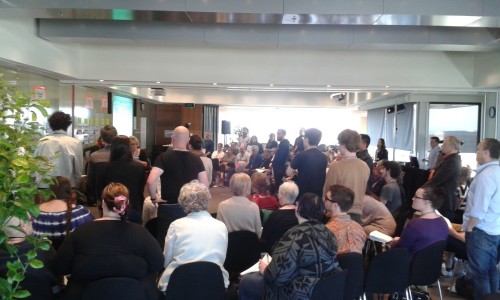Wow! I’m writing this heading back from Australia, from the citizens’ jury VicHealth have just supported on obesity. It was a very powerful, and moving, process. Having seen the jury in action, it is hard to imagine a future of democracy – and the application of behavioural science to policy – without governments using forums like these.
In case you can’t wait a moment longer, you can find the jury’s conclusions, just released, here: The conclusions are radical, in terms of current policy, but also generally practical and deliverable. They include: strengthening the power of local communities to decide about food outlets; removing ‘red’ category (the most unhealthy) foods from easy access at points of sale; and – going further than any government yet today – they asked for a 20% tax on high-added sugar drinks.
It is really worth taking a moment to look at how this group of citizens of the State of Victoria reached their conclusions, and consider why this is so important to governments and organisations across the world who want to apply behavioural science to policy.
In the USA, the argument is often that as long as a nudge is ‘choice enhancing’, or not restricting, then it’s OK. I’ve never found this an entirely convincing argument, as I’ve set out elsewhere. Many behaviours operate on an automatic level. So when a change is made to influence behaviour, whether by a government or a company, most citizens won’t notice it – a pretty thin form of choice. Furthermore, when it comes to an issue such as healthy eating, governments find themselves between a rock and a hard place. On the one hand, the costs of obesity and diet-related diseases run into billions, crippling health services across the world. But on the other hand citizens resist many of the policy interventions that might make a difference, partly as they are often unaware of the forces that drive their eating. Conventional surveys don’t give people time to reflect on what can be done and only give citizens a tick box to express their view, hiding a lot of nuance and sophisticated arguments from government and industry. Is there a way out? Why not give the evidence to a sample of citizens, and let them decide? It is, after all, their lives and lifestyles.
Over 100 jurors were recruited from a random sample of the Victorian population by the organisation New Democracy Foundation (NDF). NDF ensured that the jury wasn’t skewed by people with a special interest. A steering group was created to oversee the process, including state and city government, public health experts, industry representatives and community groups.
An online, facilitated platform gave jurors access to background reading and a range of opinions in the weeks running up to the formal jury itself. Over 60 submissions were made from a range of viewpoints (you can see them all here) and jurors were able to discuss and upload more information and links to share between them. Members of the steering group were able to observe the discussion, but not intervene other than to offer submissions if they wished. Meanwhile, the Herald Sun tracked the progress of the Jury, and exploring the issues on its pages for the benefit of the millions outside the jury itself.
After six weeks, the jurors gathered for a weekend of discussion. The experts and witnesses they heard from were chosen by the jury itself. There was real drama on the Sunday afternoon as they refined and voted on the proposals: only those agreed by 80 percent would make it in the final cut – a much higher bar than your average democratic process. It was genuinely moving and impressive to see. Citizens collided their own experiences and lives with the views they had heard, and with each other. Construction workers, care workers, retail assistants, business people, the young and old, the fit and the overweight – a microcosm of Victorians make their considered views clear.
The steering group – now tasked by the Jury – meets this week to consider how to respond. The common refrain so often used to dismiss policy proposals – that our voters or customers would not want such actions – has been knocked away. Many people across the world will watch with great interest to see what happens next.
In a dramatic conclusion to the process, Victorian citizens vote by standing or sitting to indicate their position on each of the proposals, which needed 80% agreement to make it into the final report.

